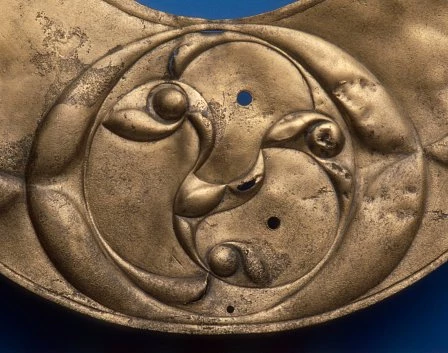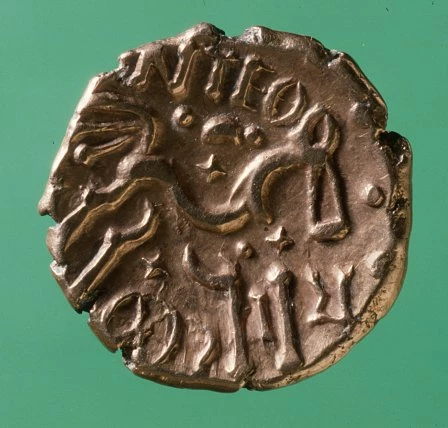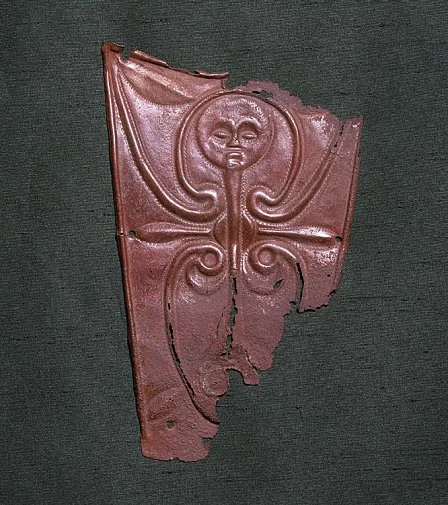Celtic Art in Iron Age Wales
Crescentic plaque from Llyn Cerrig Bach, Anglesey.
Celtic coin from Tintern, Monmouthshire.
Plaque from Tal-y-Llyn, Gwynedd, thought to date to the 1st century AD.
Ox-head bucket fittings found at Little Orme, Conwy.
Celtic Art
Celtic art reflects the way Iron Age people interpreted the world around them. The designs they used help us understand how they viewed themselves, their environment and their gods.
The Celtic art found in Wales is part of a much wider tradition in Britain and Europe, often called La Tène art, which developed during the Iron Age from about 500BC.
The earliest example from Wales is the Cerrig-y-Drudion bowl which was found in 1924 in a stone-lined grave in the county of Conwy. It is one of the few decorated artefacts from Britain to date to the 4th century BC and was probably made by British craftsmen influenced by Continental traditions.
Many more decorated objects are known from about 200BC, by which time Britain had developed its own distinctive style. British craftsmen continued to produce swords, daggers, spears, brooches and horse equipment, but also other objects such as tankards, mirrors and spoons.
Symbolic designs
Particular motifs and designs are introduced and often repeated, reinforcing their meaning. Archaeologists interpret these as symbolic and powerful with religious connotations. For example the three-fold character of the triskele (a three-legged design radiating from a centre) may represent the relationships between the living, the dead and the gods or the ongoing cycle of birth, life and death.
The crescentic plaque from Llyn Cerrig Bach (pictured) is decorated with an elaborate triskele, each limb ending with a trumpet and raised circle that suggests a stylised bird head.
Stylised representations of people and animals become more common after 100BC with faces often hidden within complex patterns. Human heads surrounded by a flowing plant-like design can be seen on plaques from the Tal-y-Llyn hoard while a variety of cows, horses, boars and birds adorn a wide range of other artefacts. Ox head escutcheons (bucket-fittings) have been found in Wales (pictured - the Little Orme (Conwy) hoard also contained two Roman trumpet brooches, indicating that this Celtic style continued in use after the Roman conquest), showing the stylised characteristics and flowing lines of native British artistic styles.
Mythical beasts are also hinted at, for example in the imaginatively constructed horse-cow heads that ornament the Capel Garmon firedog.
Celtic designs did not disappear with the Roman conquest, but continued to influence art. A bronze trulleus (saucepan) from Coygan Camp in Carmarthenshire was repaired with a sheet of metal sometime in the 3rd century AD. It was not decorated with a typical Roman design, but with a triskele motif, showing a continuing appreciation of Celtic art.
Background Reading
Early Celtic art in Britain and Ireland by Ruth and Vincent Megaw. Published by Shire Archaeology (1986).




Comments - (1)